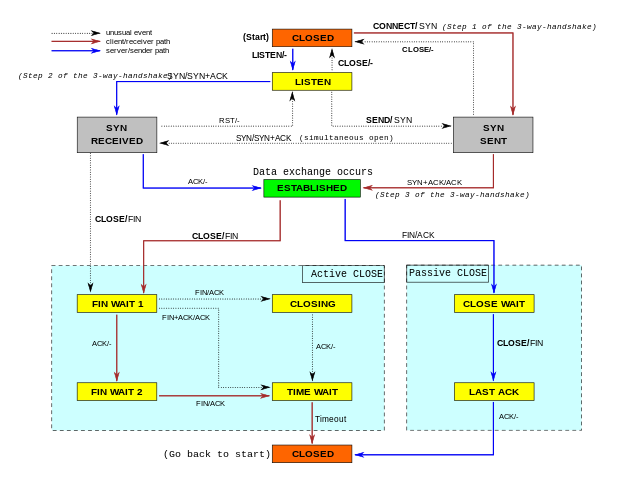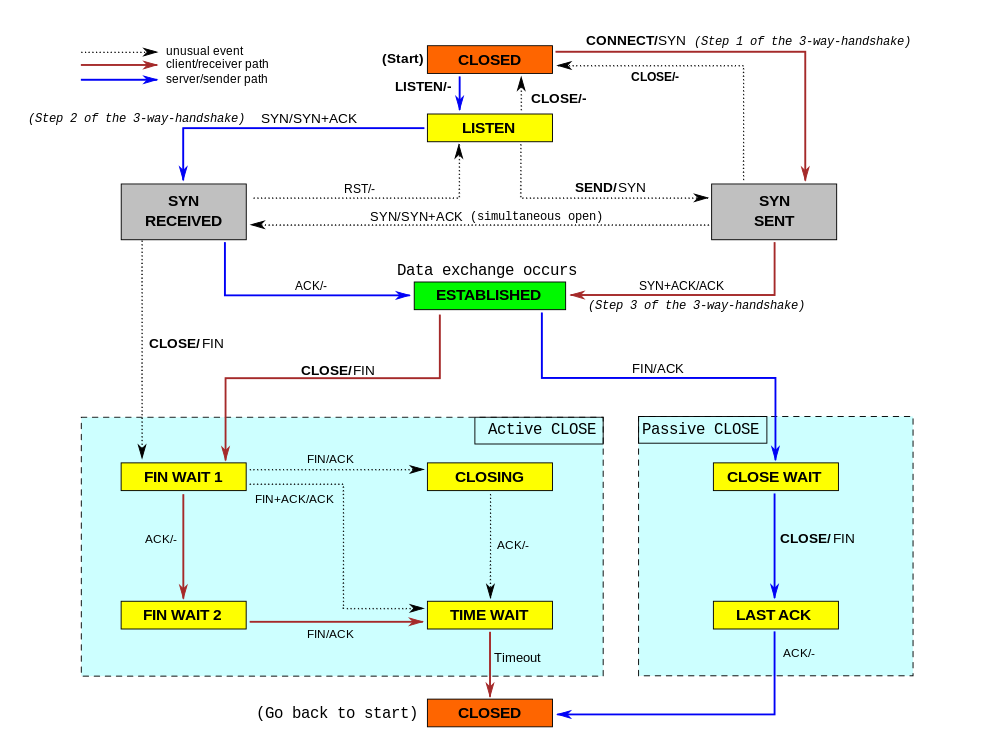Just Published: Network Services Integration in EVPN Fabrics
In last week’s continuation of EVPN never-ending story Lukas Krattiger described how you could use EVPN constructs (VNIs, VRFs) to implement service insertion, and how you could combine then with policy-based routing.
TL&DW: It’s bridging and routing ;)
You’ll need Standard ipSpace Subscription to access the videos.
DNS Resolver Centrality
Moving the DNS from the access ISP to the browser may not necessarily enhance open competition in the DNS world. In today's Internet just two browsers, Chrome and Safari dominate the browser world with an estimated 80% share of all users. If the DNS becomes a browser-specific setting, then what would that mean for the DNS resolver market? And why should we care? It would be useful to understand what is going on in the DNS today, before there has been any major shift to adopt DoH or DoT by high-use applications such as browsers. Can we measure the level of DNS centrality in the Internet today?Welcome to Birthday Week 2019


September has always been a special month for Cloudflare. Nine years ago — on September 27th — we launched Cloudflare. And, each year since, we’ve celebrated our birthday with a week full of new products and innovations that support our mission of helping to build a better Internet.
Our mission guides everything we do. One of the most intentional words in our mission is ‘helping’. Building an Internet that can meet the world’s needs cannot be done by any one company or individual; rather, it takes a global community — from nonprofit organizations and businesses to governments and individuals — collaborating to deliver new standards, technologies, and innovations. We believe Cloudflare should be an active participant in the community and help where we can and should.
Our customers and partners are an active part of the community. I often say that customers are one of my favorite parts of my job (our team is my other favorite part). Our customers give us feedback all the time about what they'd like to see to make their Internet properties more secure, more performant and more reliable. Our partners bring forward standards to help make the Internet run more smoothly. For Birthday Week Continue reading
Kicking the Tires With the NATS Go Client
I am doing some prototyping for a project and part of this includes becoming more familiar with the NATS project, including its Go client (since all of the components in my project that will be talking to NATS are written in Go). In short, I have a bunch of little services that need to talk to each other, and a message broker like NATS fits the bill. One thing that drew me to NATS specifically is that it is unapologetically - nay, proudly - simple.Kicking the Tires With the NATS Go Client
I am doing some prototyping for a project and part of this includes becoming more familiar with the NATS project, including its Go client (since all of the components in my project that will be talking to NATS are written in Go). In short, I have a bunch of little services that need to talk to each other, and a message broker like NATS fits the bill. One thing that drew me to NATS specifically is that it is unapologetically - nay, proudly - simple.Worth Following: Explaining Computer Things
People who can explain complex topics in simple terms, or focus on the essentials of a particular topic are exceedingly rare… and two of the best are Randall Munroe of the XKCD fame and Julia Evans, the mastermind behind WizardZines. I loved her recent curl and git exercises, and I’m guessing a lot of people in this industry would benefit from her latest HTTP zine.
Similarly to what I did a long time ago with ipSpace.net, Julia recently decided to go all-in, leaving her job and focusing on explaining things. I hope it will work out and we’ll keep enjoying her tidbits of wisdom for years to come.
MEF19 Preview: Accelerate Your Digital Transformation
Communications leaders from around the world will gather at MEF19 to focus on accelerating the...
Huawei Invests $1.5B in Developers, Teases AI Cloud
Huawei plans to invest $1.5 billion in developer tools and teased a bevy of AI cloud services and...
Heavy Networking 472: Grappling With Wireless QoS
If you are deploying an enterprise QoS scheme, wireless QoS matters to you. On today's episode, we go through the basics of wireless QoS, covering some of the standards, terminology, and thinking required to get your head around how we can prioritize packets over a shared medium. Our guest is Ryan Adzima.
The post Heavy Networking 472: Grappling With Wireless QoS appeared first on Packet Pushers.
When TCP sockets refuse to die

While working on our Spectrum server, we noticed something weird: the TCP sockets which we thought should have been closed were lingering around. We realized we don't really understand when TCP sockets are supposed to time out!

In our code, we wanted to make sure we don't hold connections to dead hosts. In our early code we naively thought enabling TCP keepalives would be enough... but it isn't. It turns out a fairly modern TCP_USER_TIMEOUT socket option is equally as important. Furthermore it interacts with TCP keepalives in subtle ways. Many people are confused by this.
In this blog post, we'll try to show how these options work. We'll show how a TCP socket can timeout during various stages of its lifetime, and how TCP keepalives and user timeout influence that. To better illustrate the internals of TCP connections, we'll mix the outputs of the tcpdump and the ss -o commands. This nicely shows the transmitted packets and the changing parameters of the TCP connections.
SYN-SENT
Let's start from the simplest case - what happens when one attempts to establish a connection to a server which discards inbound SYN packets?
$ Continue reading
Weekly Wrap: VMware CEO States IBM Paid Too Much for Red Hat
Weekly Wrap for Sept. 20, 2019: Kubernetes is central to the VMware-IBM rivalry; Cloudflare's IPO...
Community Spotlight – Terry Slattery
Terry Slattery has a distinguished career in networking and is well known for his contributions to the Cisco CLI, being the second person to obtain the CCIE, providing consultation to many organizations, and the list goes on. If it’s happened in networking, there’s a very good chance that Terry has experience in it. Today Terry joins us to to talk about how he got started into networking and how he’s navigated a very successful career in networking.
The post Community Spotlight – Terry Slattery appeared first on Network Collective.
It’s A Wireless Problem, Right?

How many times have your users come to your office and told you the wireless was down? Or maybe you get a phone call or a text message sent from their phone. If there’s a way for people to figure out that the wireless isn’t working they will not hesitate to tell you about it. But is it always the wireless?
Path of Destruction
During CWNP Wi-Fi Trek 2019, Keith Parsons (@KeithRParsons) gave a great talk about Tips, Techniques, and Tools for Troubleshooting Wireless LAN. It went into a lot of detail about how many things you have to look at when you start troubleshooting wireless issues. It makes your head spin when you try and figure out exactly where the issues all lie.
However, I did have to put up a point that I didn’t necessarily agree with Keith on:
Juniper JNCIE-ENT Refresh
A few months ago Juniper announced that the JNCIE-ENT lab exam would be getting a much-needed refresh. On November 1st …
The post Juniper JNCIE-ENT Refresh appeared first on Fryguy's Blog.
Cascadia Code | Windows Command Line Tools For Developers

Another free and open monospaced font for code development this time from Microsoft. A key differentiator is the inclusion of ligatures for programming symbols (see below). Ligature support is rare among text editors and very rare for TTF encoded fonts. Its more common to see OTF ligatures supported. Also, no italics support yet. Creating fonts […]
The post Cascadia Code | Windows Command Line Tools For Developers appeared first on EtherealMind.
Opinionated Automation: Packaged, Extensible & Closed Systems
Network engineers for the last twenty years have created networks from composable logical constructs, which result in a network of some structure. We call these constructs “OSPF” and “MPLS”, but they all inter-work to some degree to give us a desired outcome. Network vendors have contributed to this composability and network engineers have come to expect it by default. It is absolute power from both a design and an implementation perspective, but it’s also opinionated. For instance, spanning-tree has node level opinions on how it should participate in a spanning-tree and thus how a spanning-tree forms, but it might not be the one you desire without some tweaks to the tie-breaker conditions for the root bridge persona.
Moving to the automated world primarily means carrying your existing understanding forward, adding a sprinkle of APIs to gain access to those features programmatically and then running a workflow, task or business process engine to compose a graph of those features to build your desired networks in a deterministic way.
This is where things get interesting in my opinion. Take Cisco’s ACI platform. It’s closed and proprietary in the sense of you can’t change the way it works internally. You’re lumped with a Continue reading
Privacy Regulations Are Evolving: Are Organizations Ready?

Privacy statements are both a point of contact to inform users about their data and a way to show governments the organization is committed to following regulations. On September 17, the Internet Society’s Online Trust Alliance (OTA) released “Are Organizations Ready for New Privacy Regulations?“ The report, using data collected from the 2018 Online Trust Audit, analyzes the privacy statements of 1,200 organizations using 29 variables and then maps them to overarching principles from three privacy laws around the world: General Data Protection Regulation (GDPR) in the European Union, California Consumer Privacy Act (CCPA) in the United States, and Personal Information Protection and Electronics Document Act (PIPEDA) in Canada.
In many cases, organizations lack key concepts covering data sharing in their statements. Just 1% of organizations in our Audit disclose the types of third parties they share data with. This is a common requirement across privacy legislation. It is not as onerous as having to list all of the organizations; simply listing broad categories like “payment vendors” would suffice.
Data retention is another area where many organizations are lacking. Just 2% had language about how long and why they would retain data. Many organizations have Continue reading